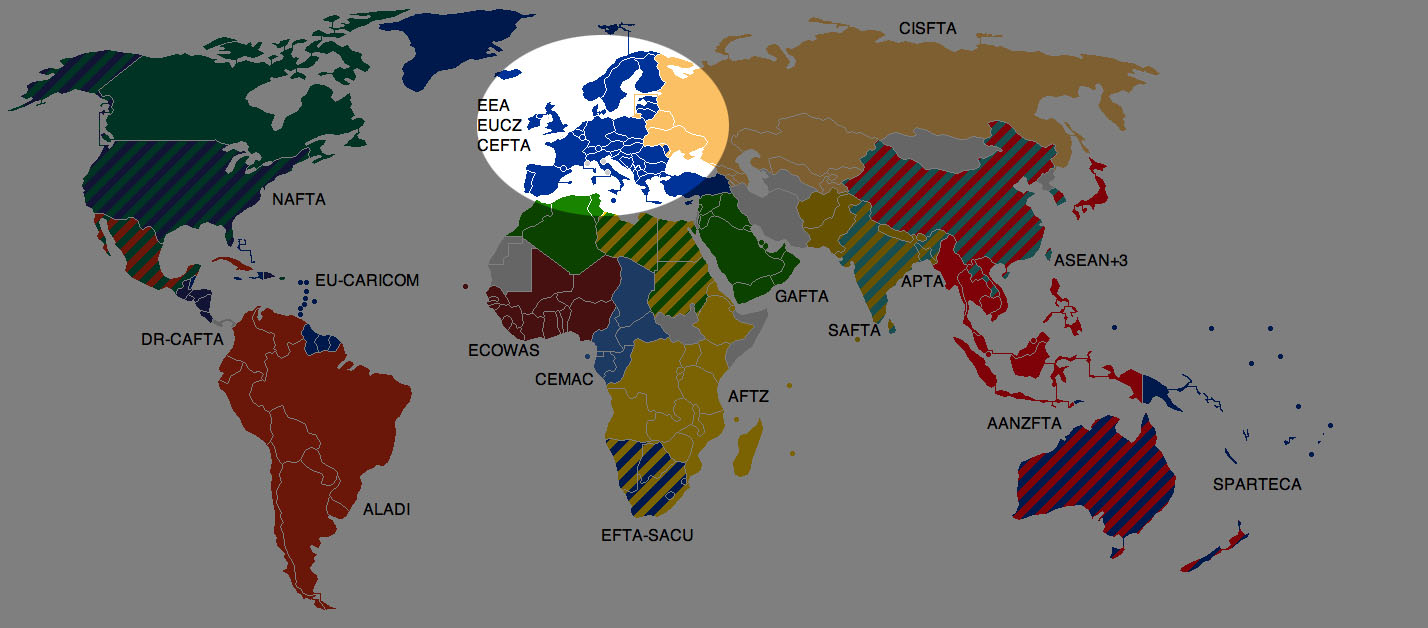When one reads news of the European Union, it is important that note that not all European countries are part of the EU. Norway, Iceland, and Switzerland are three notable examples of countries without membership, though this doesn't necessarily mean that these nations are not involved in trade relations with EU members. Changes in the European landscape have brought new nations into the EU over the years, and negotiations with members and non-members work to ensure fair trade agreements for all involved.
The European Economic Area agreement that connects three members of the European Free Trade Association (EFTA) to the European Union was established in 1994 for the purpose of allowing all countries involved to freely trade products and services. The EFTA states are treated as a single market, or "Internal Market," and while they work with the rest of Europe to promote continental tourism and environmental issues they do not utilize the Euro or observe certain policies involving agricultural trade.

The EFTA member states affected by the tenets of the EEA include:
Iceland: Given the nation's geographical location and isolation from the continent, Icelanders rely heavily on the export of fish and fish products. While more than half of overall exports come from the fisheries, Iceland also produces manufactured aluminum to ship to major trade partners. Less than five percent of their output is traded beyond Europe.
Liechtenstein: While a geographically small country, Liechtenstein exports approximately $3 billion in goods annually, apart from their economic alliance with Switzerland. Machinery and audio/video components are major exports.
Norway: Like its Scandinavian neighbors, Norway's export industry centers primarily on maritime products and natural resources - shipbuilding, seafood, and petroleum. Like Iceland, a small percentage of trade is exported outside of Europe.
While Switzerland is also a member of the EFTA, the country is not part of the European Economic Area agreement. This country has an agreement with EU nations unique to the EEA.
Involvement of the EUCZ
Independent of activities with the EFTA, the European Union Customs Union holds that tariffs on goods traded across EU borders - and specific nations signed to the agreement - are levied. During international trade negotiations , this union allows the EU to act as a single entity.
The European Union Customs Union is comprised of all EU members and the following nations:
Andorra: Andorra relies more upon tourism than trade to maintain a stable economy. What they do offer to export - tobacco, for one - is traded almost exclusively to France and Spain.
San Marino: San Marino has perhaps one of the most unusual but sought-after exports - commemorative stamps and coins, which contribute to their booming tourism.
Monaco: Known more as a luxurious tourist destination on the French Riviera, this principality relies solely on tourism and its status as a tax haven to generate income.
Turkey: Turkish textiles and apparel are coveted globally, as are exotic foodstuffs. The largest economy of the four non-EU members in this agreement, Turkey trades exports primarily with Western Europe nations.
As non-member nations join the EU, they will also apply to join the EEA agreement and in turn fall under the policies of the customs union. With only a handful of countries left - the majority of them located in Eastern Europe - time will tell how new members benefit from inclusion.